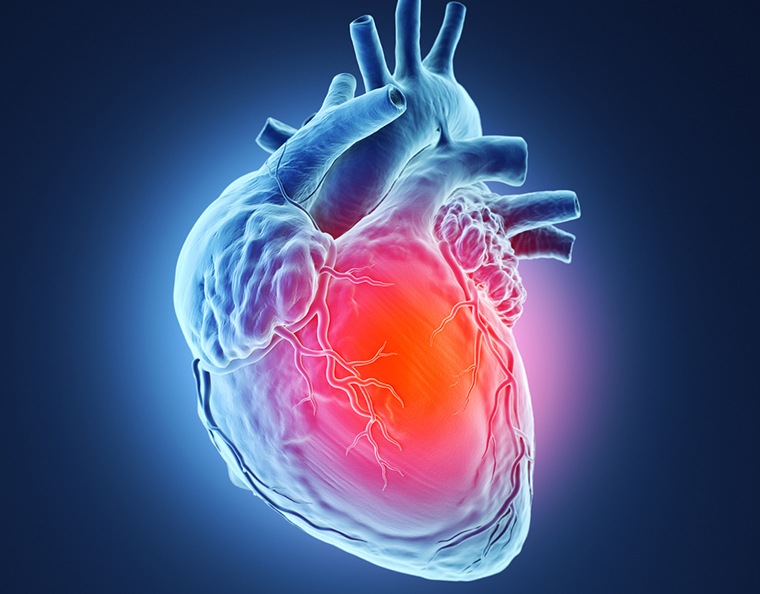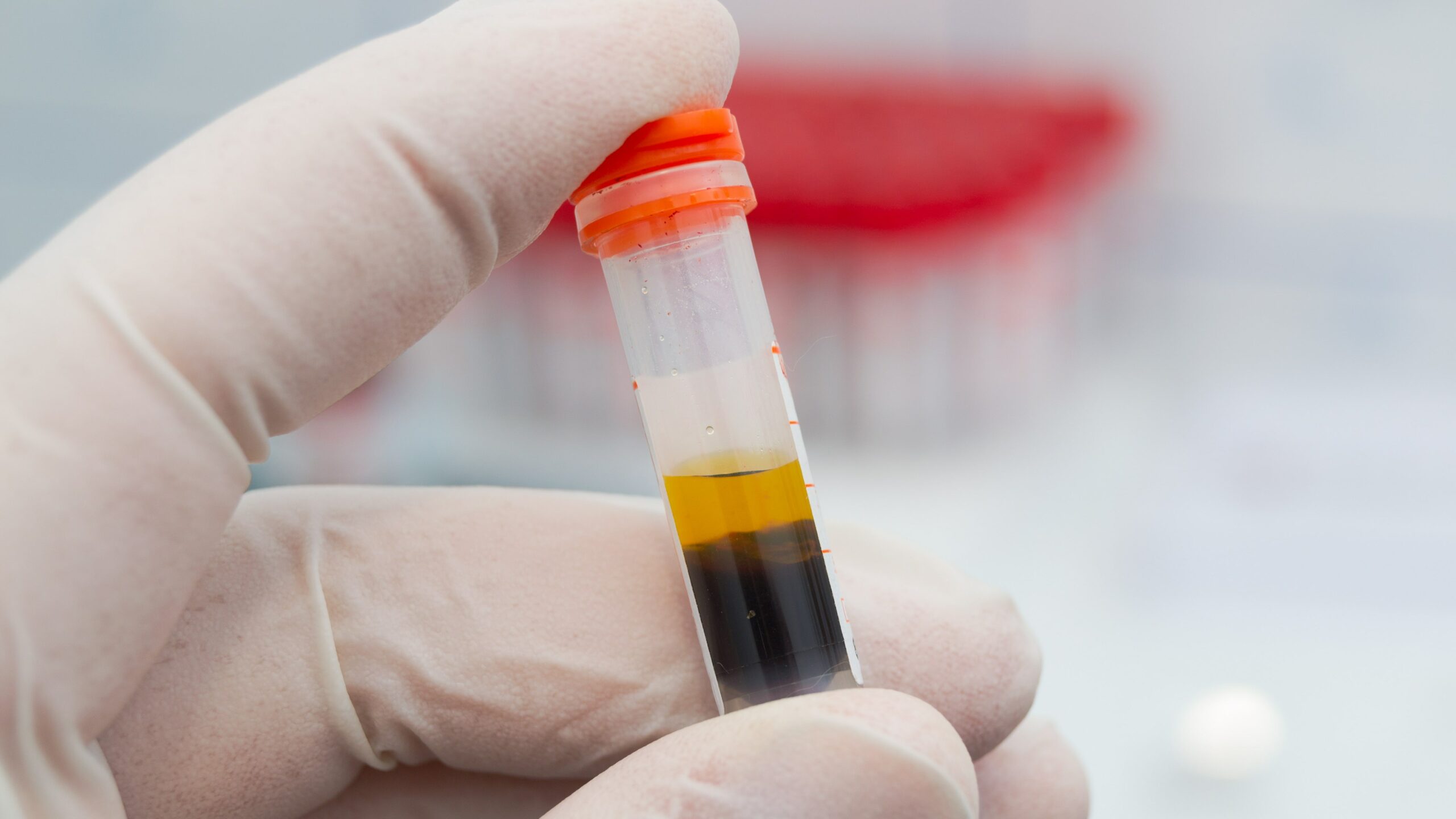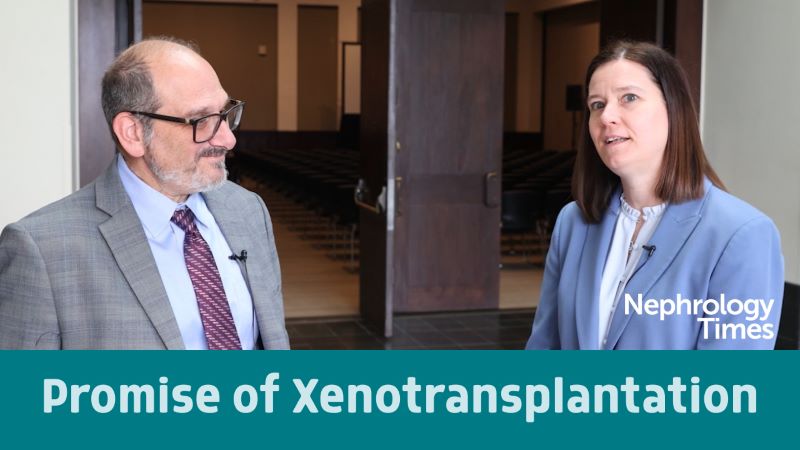
In heart transplant recipients, end-stage renal insufficiency is associated with poor postoperative survival of approximately 50% after 12 months. To improve patient outcomes, simultaneous heart-kidney transplantation is increasingly being performed. According to data from the Organ Procurement and Transplantation Network, simultaneous heart-kidney transplantation has increased nearly 5-fold from 2004 to 2018 (44 vs 202). However, compared with kidney transplants alone, heart-kidney transplants are associated with severely increased in-hospital mortality of up to 22% and, thus, reduced 1-year survival rates that range from 62% to 84%.
There are limited data on renal graft outcomes in the setting of simultaneous heart-kidney transplantation; however, reports of reduced graft survival in simultaneous heart-kidney transplantation have led to concern regarding adequate organ utilization. Oliver Beetz, MD, and colleagues conducted a retrospective study designed to evaluate prognostic factors and outcomes of patients undergoing simultaneous heart-kidney transplant in comparison with patients undergoing solitary kidney transplantation at one of the largest transplant centers in Europe. Results of the study were reported online in BMC Nephrology [doi.org/10.1186/s12882-021-02430-x].
The study examined data from patients who underwent heart-kidney transplantation and from a matched cohort of patients who underwent solitary kidney transplantation at the Hannover Medical School, Hannover, Germany, between September 1987 and October 2019. Matching was based on date of transplant (±4 years), sex, age, body mass index, cold ischemic time, human leukocyte antigen-mismatches, current and highest pre-existent percent panel reactive antibodies, and donor time in the intensive care unit. Electronic medical records from participating departments were used to analyze peri- and postoperative course of each patient.
The total study cohort included 27 patients who underwent simultaneous heart-kidney transplant and 27 matched solitary kidney transplant recipients. Among the 27 heart-kidney transplant recipients, 17 were male, and median age was 54 years. There were no statistically significant differences in characteristics of the heart-kidney transplant recipients compared with those of the kidney transplant recipients, with the exception of the rate of prior dialysis (18 [66.7%] vs 27 [100%], respectively; P<.001) and time on dialysis prior to transplant (9 vs 86 months, respectively; P<.001).
Implantation times of renal grafts were shorter in the patients undergoing heart-kidney transplant (101 minutes vs 134 minutes; P=.022), as were cold ischemia times (900 minutes vs 1118 minutes; P=.269). The rates of transfusion of packed red blood cells and fresh frozen plasma and the number of units transfused were significantly higher in the heart-kidney transplantations than in the solitary kidney transplantations.
The immunosuppressive regimen in both groups changed during the study period. Following heart-kidney transplantation, induction therapy consisted of anti-thymocyte globulin or basiliximab in combination with steroids, calcineurin inhibitors (cyclosporine A or tacrolimus) and antiproliferative agents such as azathioprine or mycophenolate mofetil. Since 2004, nearly all patients received a standard immunosuppression of anti-thymocyte globulin, tacrolimus, mycophenolate mofetil, and steroids. In one patient with prior heart surgery, everolimus was continued rather than standard anti-proliferative agents.
In patients who underwent solitary kidney transplantation, since 2002, induction therapy with basiliximab was performed. Two of the 27 patients received anti-thymocyte globulin and one patient received alemtuzumab. Long-term therapy was based on cyclosporine A until 2017. After 2017, tacrolimus was mainly used as calcineurin inhibitor. In 2005, triple therapy was established, including mycophenolate mofetil, everolimus, or mycophenolic acid in addition to steroids.
Median patient follow-up was 100.33 months. In patients in the heart-kidney transplantation group, time spent in the ICU (5.5 days vs 1 day; P<.001) and the length of hospital stay (27 days vs 20 days; P=.022) were significantly longer compared with patients in the kidney transplantation only group.
In the immediate postoperative period, four of the 27 patients undergoing solitary kidney transplant experienced a total of five surgical revisions due to wound infection (n=3), abnormal duplex sonography (n=1), and insufficiency of the ureteral anastomosis (n=1). The frequency of postoperative complications was higher in the heart-kidney transplantation cohort. Complications related to the kidney transplant occurred in 10 of the 27 patients: postoperative hematoma (n=3), hemorrhage (n=2), wound infection (n=3), and abnormal duplex sonography (n=3). Eight of the 27 heart-kidney transplantation patients underwent 15 thoracotomies for early complications, including cardiac tamponage (n=10), pericardial empyema (n=1), postoperative hemorrhage (n=1), and deep sternal wound infection (n=3).
In the cohort of solitary kidney transplantation, there was no primary nonfunction observed. There was graft loss in four patients as a result of chronic graft failure/chronic vascular rejection (n=3) and amyloidosis (n=1). Nine grafts were lost due to death; none of the nine patients died during the primary hospital stay.
Five of the patients in the heart-kidney transplantation cohort experienced primary nonfunction of the renal grafts; only one patient was still alive at the time of follow-up. Four of the five patients were considered high risk with a history of prior cardiac surgery requiring sternotomy. The rate of subsequent dialysis in the postoperative course was significantly higher after simultaneous heart-kidney transplantation than after kidney transplantation alone (48.1% [n=13] vs 22.2% [n=6]; P=.0444).
Despite lower 5-year kidney graft survival in the heart-kidney transplantation cohort compared with the solitary kidney transplantation cohort (62.6% vs 92.1%; 111.73 months vs 183.03 months), graft function monitored by estimated glomerular filtration rate over time and patients survival were not significantly inferior in the overall heart-kidney transplantation cohort. However, heart-kidney transplantation in patients with prior heart surgery resulted in poor graft and patient survival (57.00 months and 94.09 months, respectively) compared with patients undergoing kidney transplant alone (183.08 months and 192.71 months; P<.001) and with patients undergoing heart-kidney transplant without prior heart surgery (203.22 months [P=.016] and 203.22 months [P=.019], respectively).
“Our data demonstrate the increased rate of early kidney graft loss and thus significantly inferior graft survival in high-risk patients undergoing simultaneous heart-kidney transplantation. Thus, we advocate for a ‘kidney-after-heart’ program in such patients to ensure responsible and reasonable utilization of scarce resources in times of ongoing organ shortage crisis,” the researchers said.
Takeaway Points
- Researchers reported results of a retrospective study evaluating prognostic factors and outcomes among 27 patients undergoing simultaneous heart-kidney transplantation in comparison with 27 patients undergoing kidney transplantation alone between September 1987 and October 2019 at a transplant center in Germany.
- Despite lower 5-year kidney graft survival in the heart-kidney transplant cohort (111.73 vs 183.08 months), graft function and patient survival were not significantly inferior in the heart-kidney transplant cohort in general.
- Among patients in the heart-kidney transplant cohort with a history of prior heart surgery, early graft and patient survival were reduced compared with patients in the solitary kidney transplant cohort and with those in the heart-kidney transplant cohort without prior heart surgery.







 © 2025 Mashup Media, LLC, a Formedics Property. All Rights Reserved.
© 2025 Mashup Media, LLC, a Formedics Property. All Rights Reserved.